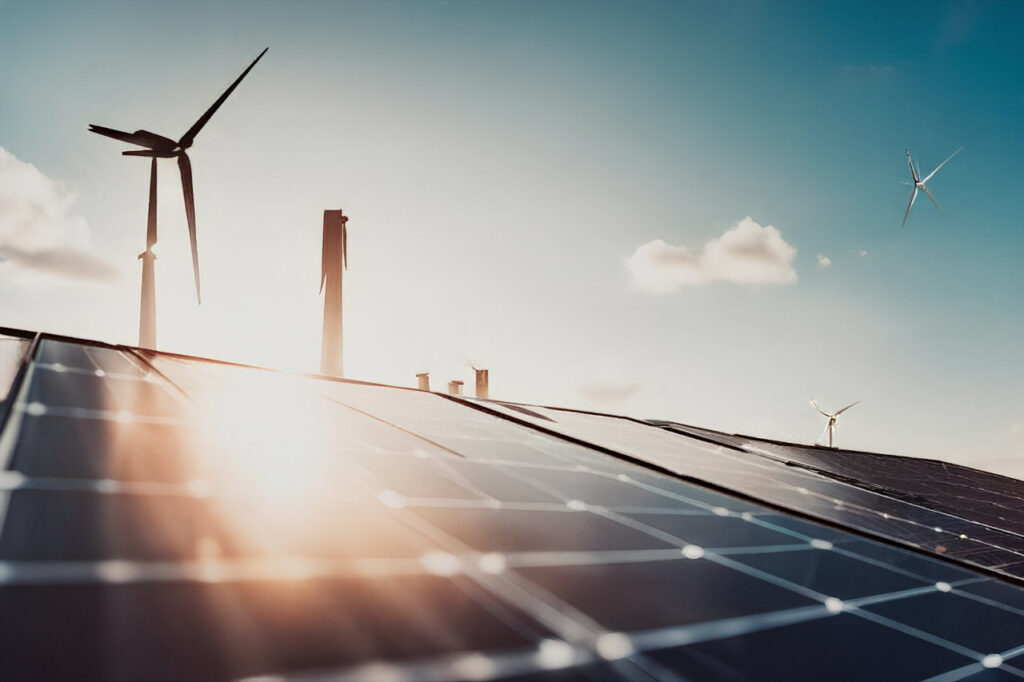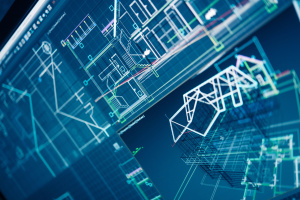Dieser Beitrag ist auch verfügbar auf:
Deutsch
Energy trading of the future will take place on peer-to-peer markets
One of the most exciting application areas for blockchain is peer-to-peer energy trading. In traditional energy systems, energy flows from large centralized power plants to consumers. However, distributed technologies such as solar panels or wind turbines are enabling more and more households and businesses to generate their own energy. Surplus energy is often sold back to the grid, albeit at fixed rates.
Blockchain technology makes it possible to process these transactions directly and without intermediaries. One example of this is the Australian company Power Ledger, which uses blockchain technology to enable direct trading between producers and consumers. Surplus solar energy can be sold to other members of the grid in real time.
Another example is the Dutch project Vandebron. Here, owners of wind turbines or biogas plants can sell surplus energy directly to local households. Blockchain technology is used to process payments and verify the origin of the energy.
Smart grids offer energy transparency in real time
Blockchains can also help make smart grids more efficient. Smart grids are electricity grids that balance the consumption and production of energy automatically in real time. They evaluate usage data to optimize supply and demand and minimize energy losses. However, conventional data processing tools are reaching their limits when it comes to handling these huge amounts of data.
An impressive example is the Brooklyn Microgrid, which is controlled using blockchain technology. The city’s residents can sell surplus electricity from their solar panels directly to their neighbors. The blockchain takes on the role of a digital notary, ensuring that all transactions are transparent and tamper-proof.
The ION Power Grid
Another innovative application is the ION Power Grid from Salzburg, Austria. This network combines blockchain with AI-supported data analysis to optimize energy consumption. Participating households and businesses can not only sell surplus energy, but also create customized energy-saving plans based on real-time data.
One of the advantages of ION Power Grid is the ability to integrate ION Power Stations into the grid to close gaps in the energy supply. These generate energy through cavitation. Cavitation is a physical phenomenon that occurs when the pressure of a liquid drops, causing vapor bubbles to form. Cavitation can be used to generate energy by converting the high temperatures and pressure waves released when the vapor bubbles collapse into usable energy.
Each participant in the network has a digital identity that is stored in the blockchain. This allows the flow of energy to be tracked with high accuracy. For example, a wind turbine in a remote village can record exactly where it delivers its energy – whether to a local hospital or a factory in the city.
By using blockchain technology, the ION Power Grid creates a transparent and secure platform that not only reduces the world’s carbon footprint, but also provides financial incentives for sustainable energy production.
Providing the backbone for renewable energies
Another innovative application of blockchain technology is the promotion of investment in renewable energy. Projects for the construction of solar parks or wind farms can be financed through tokenization models. Investors buy tokens that represent a share in the project. These tokens can later be traded or redeemed for profits from energy production.
Australian company Powerledger develops blockchain-based platforms for peer-to-peer energy trading and management. With projects in more than 20 countries, Powerledger is using blockchain to make the market integration of renewable energy more efficient.
There are also some interesting projects located in Africa: SunExchange, a South African company, aims to make financing solar panels for schools and businesses easier. Investors around the world can buy shares in these panels, earning a return and contributing to sustainable energy in developing regions.
Ensuring reliable traceability of energy sources
Another issue of conventional power grids is that the origin of energy is often difficult to trace. Most consumers expect to be able to trust that the electricity they use comes from renewable sources. Blockchain can provide transparency. Every kilowatt-hour of renewable energy is registered on the blockchain and assigned to a specific consumer.
In collaboration with companies such as Shell and Volkswagen, the Energy Web Foundation platform has developed a blockchain-based solution that makes it possible to track the entire life cycle of energy. In this way, companies can improve their carbon footprint and prove to their customers that they are using green energy.
Another innovation is the International Renewable Energy Certificate, I-REC. This system is based on blockchain technology and ensures that every unit of green energy generated is clearly assigned to a consumer. Large companies such as Microsoft and Google use similar systems to reduce their CO₂ emissions and achieve their sustainability goals.
Blockchain and e-mobility
E-mobility can also benefit from blockchain technology. This is demonstrated by the BANULA project, which aims to improve the charging infrastructure using blockchain technology. The project is being coordinated by the Fraunhofer Institute for Industrial Engineering.
The project focuses on calibration-compliant billing, barrier-free access and real-time monitoring of charging processes. In addition, AI-supported solutions are being tested for use in improving energy management processes.
Essen-based MotionWerk is another innovative effort which relies on blockchain to enable seamless and transparent payment processes between drivers and charging points, regardless of the charging point operator.






